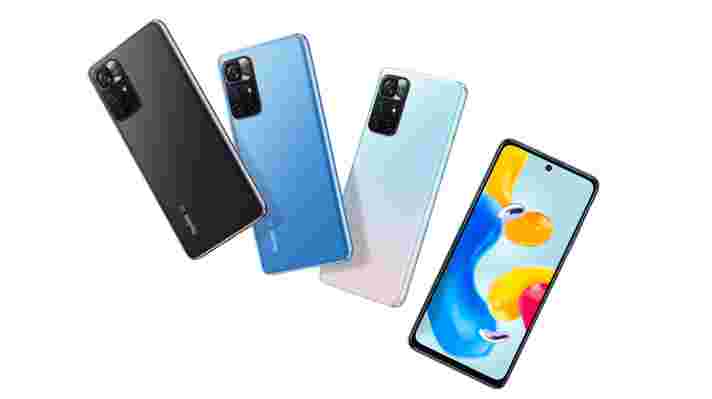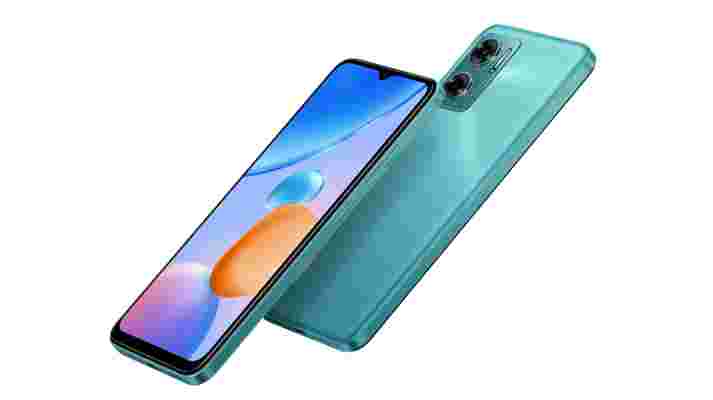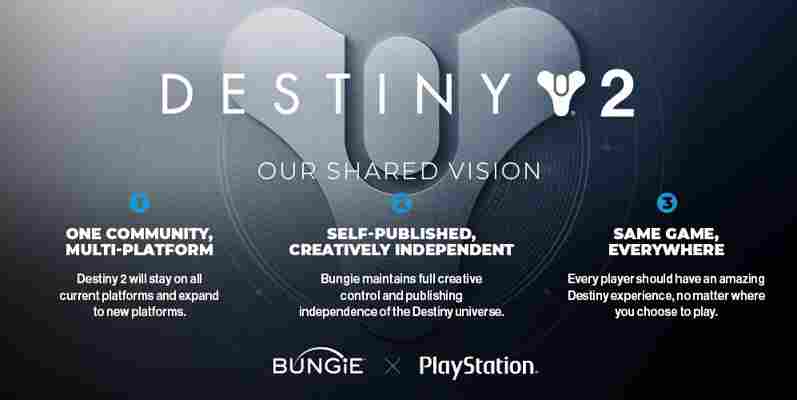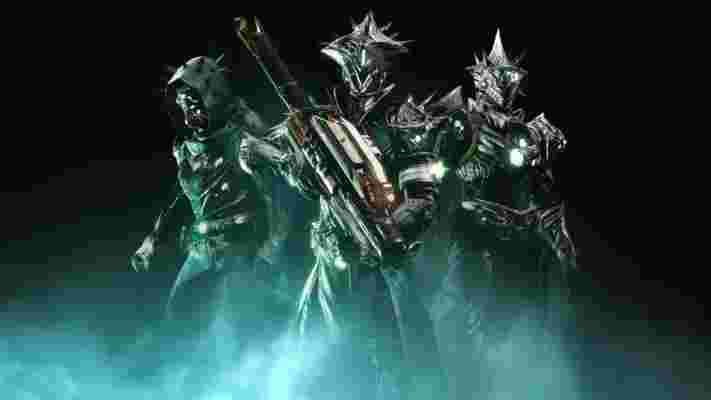Casio has unveiled a new G-Shock watch that puts a classy new spin on the original square-faced design. The GMWB5000MB-1 has a full metal case and back, which have been given a range of different finishes using various polishing and finishing techniques.
Like many Casio G-Shock watches, the GMWB5000MB-1 is decorated using ion-plating, but with a twist. First, the stainless steel body and components are sprayed with fine abrasives to polish them (a process called honing), then ion-plated in black.
While the body and bracelet of the watch are left matte black, the bezel is polished with a hairline finish that reveals the silver-toned metal underneath. The screws and buttons have a bright mirror finish to make them stand out, and the face features the classic brick pattern of the first ever G-Shock watch in shades of black and gray.

Get connected
Unlike last year's G-Squad Pro , this isn't a smartwatch , but it has a Bluetooth module that allows you to link it to the G-Shock Connected smartphone app (available for Android and iOS ). This enables you to record the time and your current location with a button-press, set reminders, and access a local calendar for your country.
You can also access world time for 300 cities, switch between world and home time, set timers and alarms, and use the watch to find your phone.

Otherwise the new GMWB5000MB-1 has the same specs we've come to expect from a G-Shock watch, including 200m water resistance, LED backlight, countdown timer, full audio calendar, five daily alarms (including one with snooze), and – of course – shock resistance.
Pre-orders open on March 30, and the watch will go on sale in April at the official G-Shock website , the G-Shock store in Soho, and some third-party stores. It'll be priced at $600 (about £450 / AU$800), which lines up with earlier all-metal GMW models like the GMWB5000GD-9 .
If you're a fan of the classic shape and the recently launched MRGB5000D-1 and MRGB5000B-1 are beyond your budget, the GMWB5000MB-1 is a great-looking alternative that's well worth investigating.
Xiaomi's new cheap phones bring super-fast charging and 5G at a surprisingly low price
Xiaomi has just unveiled three new phones under its Redmi sub-brand, and between them they pack a number of eye-catching features.
The top model is the Redmi Note 11 Pro Plus 5G, which supports 120W charging. That’s enough to get its 4,500mAh battery from zero to 100% in just 15 minutes, and has the vast majority of phones beat – even top-end flagships like the Xiaomi 12 . The phone also comes with a 120W charger in the box, so you won’t have to spend extra.
The Redmi Note 11 Pro Plus 5G additionally has a 6.67-inch 1080 x 2400 AMOLED screen with a 120Hz refresh rate and a high maximum brightness of 1,200 nits.
There’s a triple-lens camera on the back, with a 108MP main sensor, an 8MP ultra-wide camera, and a 2MP telemacro one, while around the front it has a 16MP snapper.
Other features include a mid-range MediaTek Dimensity 920 chipset, a choice of 6GB or 8GB of RAM, and a choice of 128GB or 256GB of storage. Prices start at $369 (around £280 / AU$490), and it’s set to go on sale globally from April 6.

Then there’s the Redmi Note 11S 5G, which is a step down but still has some solid specs, like a 6.6-inch 1080 x 2400 screen with a 90Hz refresh rate, a 5,000mAh battery with 33W charging, a Dimensity 810 chipset, 4GB or 6GB of RAM, 64GB or 128GB of storage, and a triple-lens camera, with a 50MP main sensor, an 8MP ultra-wide, and a 2MP telemacro.
This one starts at $249 (roughly £190 / AU$330) and will also be sold globally from April 6.
Finally, there’s the Redmi 10 5G, which stands out primarily for being an incredibly cheap way to get a 5G phone , as it starts at just $199 (approximately £150 / AU$265).
Beyond that, the Redmi 10 5G has a 6.58-inch 1080 x 2408 screen with a 90Hz refresh rate, a 5,000mAh battery with 18W charging, a 50MP main camera, a 2MP depth sensor, a 5MP camera on the front, a Dimensity 700 chipset, 4GB or 6GB of RAM, and 64GB or 128GB of storage. There’s no word on when this one will ship, but presumably soon.

Analysis: ‘global’ availability, but some regions may be left out
While Xiaomi claims these phones will be launched globally, that doesn’t necessarily mean you’ll be able to buy them.
We know that all three are coming to the UK, but the likes of the US and Australia are less certain. In fact, few Xiaomi phones come to the US, so don’t be surprised if these don’t land there, despite the US pricing above (which is sometimes given even when US availability isn’t planned). Australia is more likely to get them, but that too is unconfirmed at the time of writing.
Still, if you’re after one of the best cheap phones there are loads of other options, so you shouldn’t miss out too much.
Sony's Bungie buyout: What it means for both companies and Destiny 2 players
Gaming has officially entered an arms race. With Sony’s proposed acquisition of Bungie , after Microsoft picked up both Bethesda and Activision Blizzard , it’s clear this isn’t just a pattern - this is the new normal in the games industry. It feels like for as long as there are major video game developers and companies to be bought, history’s most expensive game of Hungry Hungry Hippos will continue.
Sony going into its pockets and picking up Bungie feels different from anything Microsoft has done yet, though. Activision Blizzard had fallen from grace. The company is currently being sued by the state of California over heinous allegations of sexism and harassment. On top of that, the once surefire hits like Call of Duty have waned, with Vanguard in particular disappointing last year.
Bungie is in a different place. While not without its own woes in workplace culture, as reported by IGN, Destiny 2 is remarkably healthy, and the company has been in a time of growth. It has been hiring exceptionally fast and is currently building a new headquarters in Seattle to house the expansion.
On top of that, Bungie has been building interests outside of just Destiny 2, be that ambitions of Destiny TV and films, but also in creating new multimedia and franchises. CEO Pete Parsons told the author of this article, then with Metro UK : “So we started about three years ago, Jason and Jonny Ebbert and Zach Russell and a few of us started working on new incubations. The way to think about that is not just on new games. I think that is often the parlance people use. Actually a process around how we want to incubate the potential for new titles, but more importantly, new and amazing talent.”
Other factors do make the deal particularity surprising too. For one, Bungie has been through this all before. The company has had two high-profile splits in its past. Ironically, they come from Microsoft and Activision. Bungie was previously owned by Microsoft, leaving in 2007, and also managed to get Destiny 2 out from under the wing of an Activision publishing deal back in 2019.
On top of that, Parsons has been publicly vocal against companies buying Bungie for years. When rumors circulated in 2020 that Microsoft was in talks to buy the company, Parsons got to Twitter to publicly rebuff it.
That’s why it’s surprising that Bungie has finally given up that fierce independence it’s championed for years. However, when you consider the climate of the games industry right now, as well as the rather unique terms of this agreement, there’s a lot that makes sense.
What does this mean for Destiny 2 and players?

Destiny 2 is the company’s flagship, and one of the biggest live service games in the world. As with Microsoft ’s acquisition of Activision Blizzard, the conversation is quickly going to turn to ‘What about exclusivity? Will Destiny 2 or future games be exclusive to PlayStation?’
Thankfully, and curiously, it seems not. This is a different kind of acquisition than others we’ve seen at this scale. It seems like, genuinely, truly, Bungie will continue to release games on other platforms.
In the FAQ about the acquisition, Bungie answered whether Destiny 2 or future games in development would become PlayStation exclusives. It said plainly: “No. We want the worlds we are creating to extend to anywhere people play games. We will continue to be self-published, creatively independent, and we will continue to drive one, unified Bungie community.”
It seems, as part of this deal, Bungie will keep its autonomy, which is very rare in acquisitions. On top of that, Bungie has a committed future to Destiny 2. The game is social in its nature and has only recently implemented cross-play, a feature that feels like it would be very hard to untangle from the game, both technically and ideologically.
Bungie has, as it says in the FAQ, announced expansions that will still be part of Destiny 2, too. Witch Queen is out in a matter of weeks, and, past that, Lightfall and The Final Shape will keep Destiny 2 going until at least 2025.
PC and Xbox players will be relieved to hear this commitment to a multiplatform future.
It’s strongly believed that, on top of wanting independence, one of the key reasons Bungie split from Activision in the first place is that it wanted to commit to Destiny 2. Activision is thought to have wanted Destiny 3 instead. It’s hard to believe Bungie would put itself in a position where that kind of decision would be out of its hands again, and it’d start rushing out a PlayStation exclusive sequel.
Despite healthy skepticism, which should be maintained, everything on the surface is exciting for Destiny 2 and its players. After the split from Activision, Bungie found its independence, but there had been statements that players probably shouldn’t expect expansions the size of Forsaken anymore (via GamesRadar). As part of the break, Bungie lost the support of Activision Blizzard developers Vicarious Visions and High Moon Studios. That impacted the size of what the developer could tackle per release.
Destiny 2 has since found a structure that works for the size of the studio. However, with extra funding and possible support studios, Destiny 2 could return to the enormous expansions and seasonal content of the past.
Symbiosis: What do Sony and Bungie get out of this?

Bungie is remaining fairly autonomous in this acquisition, it looks like the studio will retain creative control, publishing opportunities, and the ability to continue to publish to multiple platforms. So, what does Sony get out of this?
Well, the obvious answer is a cut of profits. There’s a lot more going on here though, and it signals how strange this buyout is in the current ‘acquisition climate’. This appears to be a more symbiotic relationship than anything Microsoft or Tencent has been doing thus far.
In an interview with GamesIndustry.biz , PlayStation head Jim Ryan plainly stated that Bungie will likely play a big part in the brand's future live-service games. He said: “I would back us to do [live-service games] ourselves, but when you have the potential to have a partner like Bungie who has been there, done it all before, learned the lessons, and have got this wonderful, brilliant team who is there and has the potential to help us... we think we can take something that would have taken a certain number of years, and significantly decrease the time it will take to get it right.”
Parsons also spoke about wanting Bungie to branch out from video games and into TV and Film. This is somewhere Sony, as a much broader company, can obviously help. He said: “[Sony is] one of the greatest entertainment companies in the world. We saw this great opportunity to build -- not just Destiny, we're working on more than Destiny -- these great interactive experiences, which we think we're good at. But also being able to explore these worlds even more.”
Both parties have a lot to gain from this partnership. This doesn’t feel like Sony coming in to buy Bungie to beef up its PlayStation division. This feels like two entities that will benefit from one another’s expertise, filling out their gaps.
Guardian

Before this announcement, Bungie was a prime prize for a company trying to absorb a huge game studio. It seemed clear since Microsoft had gotten so bold in its spending, PlayStation had to respond. It did, though in a very unique and interesting way. This is a retaliatory acquisition to Microsoft’s wanton spending, but this is also Sony buying a company in its prime, and showing exciting signs for the future.
However, more than that, Bungie has also secured its future in a volatile moment. With mega-corporations looking to spend, and spend big, it's not hard to imagine Bungie could have sold for more than the proposed $3.6 Billion if it wanted to, to a higher bidder. However, the company is securing the future on the best terms it can. Bungie comes under the wing of Sony, with the terms of fierce independence. It seems, for the most part, it will be left to operate as it is.
By agreeing to these terms, Bungie secures the company’s autonomy in a climate where major companies are looking to get their hands on massive independent studios just like Bungie. Hostile takeovers happen, offers too big to refuse to happen. It feels like anything can happen right now.
Bungie agreeing to this proposed purchase stops dead any prospective buyers who wouldn’t agree to give the studio the independence and autonomy it needs to continue building the future it has been. This is a unique deal, with unique implications for a unique game studio. Everything about this feels different than any of these previous major acquisitions, and one wonders if it ever will again. Bungie has found relative buoyancy in frenzied waters, and right now, that seems about the best any major independent publisher or studio can hope for.